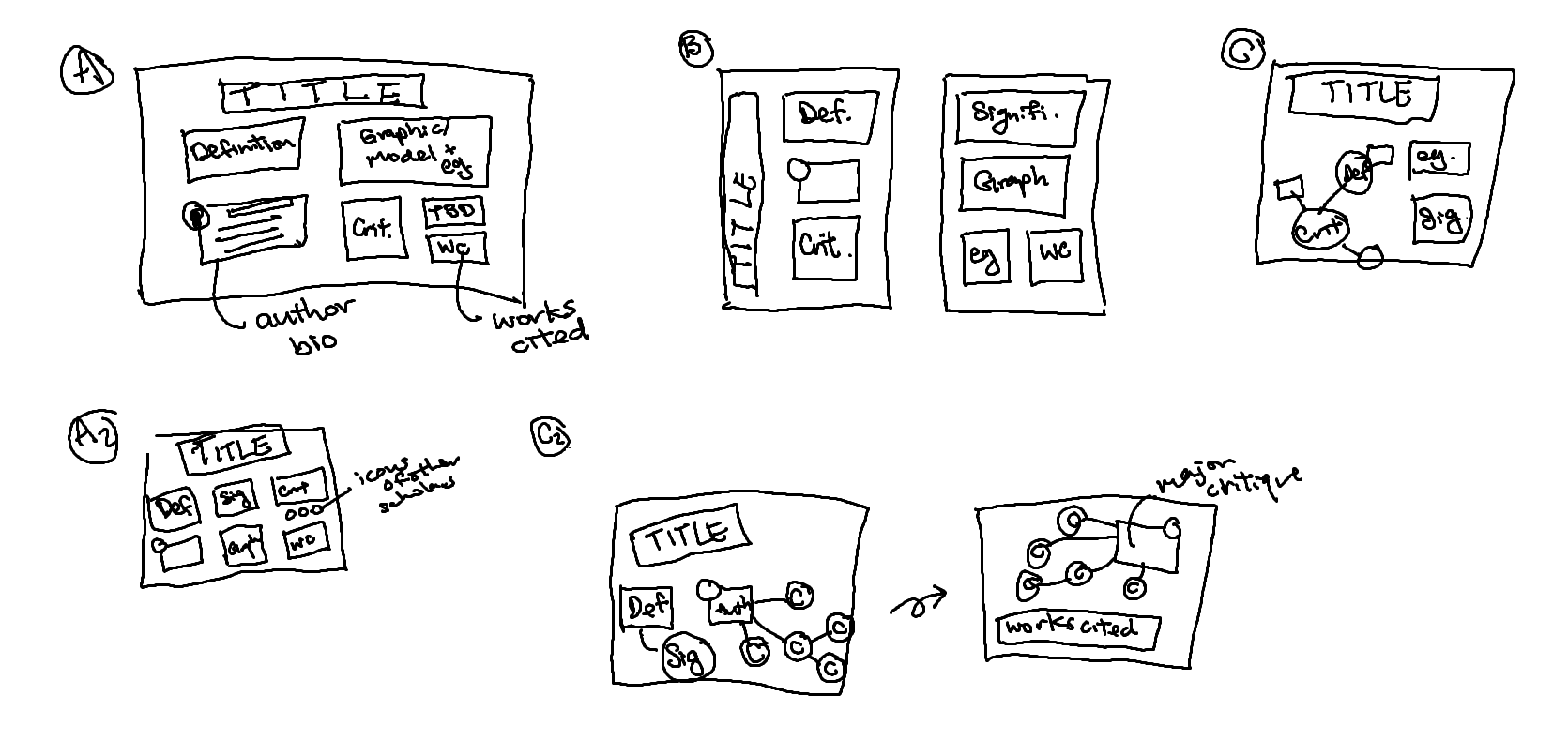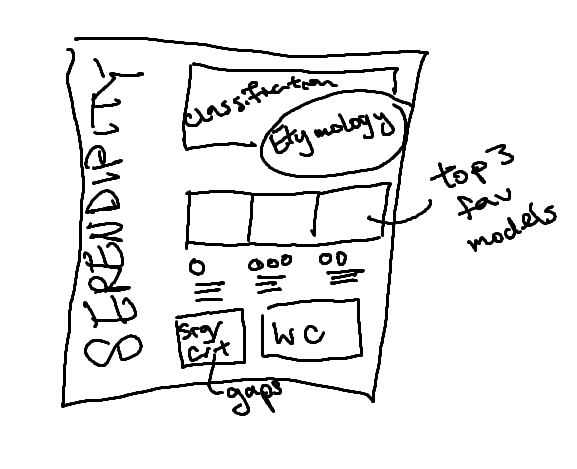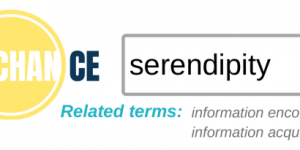LIBR-506_ASSGN-2_Serendipity-Handout
The layout of this handout is licensed under Creative Commons BY-NC-SA.
The handout, created in Canva, was created for the second assignment of LIBR 506 and is meant to give my peers an overview of the concept of serendipity in information studies. The assignment is meant to be a one page, double sided design that is simple, informative, and visually appealing. Handouts were shared over Canvas and in discussion round tables on Mar. 6, 2024.
Designing the Handout
Before I began doing my research, I made a few draft designs of layouts I could use for my handout, based on the assignment requirements. The thought behind this was that the layout could help determine how much time I would search for a certain amount of information (e.g., I may not want to spend as much space on the illustrative scenario compared to the summary of key ideas). Below are a few initial sketches:

As I proceeded with my research, however, I found that the concept of serendipity is largely one that has been conceptualized and modeled many different times by different scholars and across different disciplines. I needed a format that could capture more than just one article and an article representing a major critique:

I also wanted the handout to mimic the affective experience of serendipity, and so went with the design theme based on a typical database search. This allowed me also to creatively incorporate additional readings and works cited as part of my design.
Deciding What to Include
The database-based design allowed me to include information that I might have normally otherwise left out, like related terms, other disciplines that study the idea, and a range of dates. The bar chart of dates actually corresponds to the decades of the articles I ultimately read to create the handout, but also helpfully shows the spike in research in the 2010s that was revealed in my literature review.
I decided to highlight Yaqub (2018) and Erdelez and Makri (2020) for my handout because the former highlighted the ways in which the field has been scattered and the latter consolidated many of the congruent ideas in models for the concept and phenomenon.
Although it doesn't fully achieve the assignment instruction to provide a "descriptive summary ... of the theory/model," I chose to largely have the table and figures speak for themselves because, especially in the case of Erdelez and Makri's model, they are already quite thorough and have their own definitions and examples embedded in the model.
Identifying Impact
Because the primary critique of the theory I chose to highlight is that it doesn't have a solidified model for study in library and information sciences, it was difficult to create a "Summary of key contributions and impact" compared to other models like Bates' berrypicking model. Instead, I chose to showcase how the concept is used and understood within human information behaviour research with Agarwhal's (2015) figure.
The "Wise Agent" Model
I decided to try my own hand at creating a model that could be understood by my peers that simplified and consolidated the ideas found in many models to accompany the ideas presented in the handout at the very end.
Considering the User Group
The intended audience for the overview handout is stated to be my classmates, and so the second side of the page is meant more to be thought-provoking and engaging, allowing the users to learn actively. Overall, the handout also assumes the reader will understand major information science concepts already covered in class, such as the definition of "human information behaviour."
Presenting to my Peers
During the round table discussion with my classmates, we each had about 8 minutes to present our handout. I was placed in a group of 5 people including myself and together we covered Gatekeeping, Taylor’s Question Negotiation, Wilson’s Model of Information Seeking, Serendipity, and Bates’ Berrypicking Model, in that order.
I benefited from this order because I was able to draw on my classmate's explanation of Wilson's model to illustrate aspects of the model I was explaining. I appreciated being able to not only explain the concept, but the thoughts that went into creating the handout itself. It was also valuable to see how others presented their information to inform how I might adjust my own handout if I were to do the activity again.
Demonstrated Competencies
The goals of this individual assignment are for you to deepen your understanding of the theoretical underpinnings of HII, gain experience drawing upon theoretical knowledge to interpret real-world information behaviours, and to design an information object that is effective in communicating what you have learned to your classmates. This assignment contributes to the following course learning outcomes. Ability to:
- Reflect in a critical and informed manner on individual and institutional information practices (3).
- Enhance interpersonal and written communication skills (4).
- Assess, select and employ communication strategies based on the nature of the communicative goals and audience. (5)
- Understand and apply relevant library and information science literature and search tools to address information needs, questions and issues in information interaction (7).
The goals learning outcomes in turn correspond to:
- 3: MLIS Graduate Competency 5 - Reflect in an informed and critical manner on information infrastructures and practices, acknowledging the role of power and privilege, the ongoing influence of colonization, and the value of diverse worldviews;
- 4, 5: MLIS Graduate Competency 6 - Communicate clearly using a range of media suited to diverse audiences and goals; and
- 7: MLIS Graduate Competencies 8 - Design and conduct research and evaluation studies to inform evidence-based decision-making, and 10 - Contribute to the advancement of the field through informed practice, service and/or research.

During our course discussions about information models prior to this assignment, I asked about a model of information behaviour that accounted for situations where one passively seeks out information that may be relevant to the user but not their current task. This was a great opportunity to explore how this idea has been conceptualized in the current scholarly context.